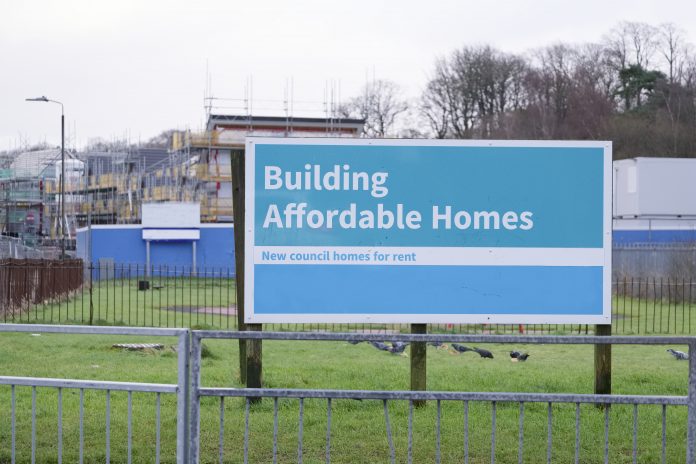Stuart Andrews, product group head and Matthew Nixon, principle associate at Eversheds Sutherland, examine Section 52 agreements
You might wonder when you leaf through the Levelling Up and Regeneration Bill, how any development was ever delivered before the era of the Community Infrastructure Levy (CIL) and S.106 Agreements. You might also ask yourself what has CIL actually delivered, but we will return to that issue.
In the good old days, arrangements to secure funds or land transfers took the form of S.52 Agreements under the TCPA 1971, but these were rare beasts even then, and they were often limited to essential highway works or some other key infrastructure. The rather quaint and antiquated reason was that Council used to plan, anticipate growth, forward fund and then use taxation to pay for it. I know – it was just mad back then!
As those structures fell away, the S.52 Agreement became increasingly complex in meeting the key infrastructure needs of new development. The shopping list also started to grow, and the limitations of the old structure heralded the arrival of the newly invigorated S.106 Agreement. This rapidly became the weapon of choice in the fight to secure all manner of ‘goodies’ to make the development acceptable, and it was open to abuse by developers and local authorities in equal measure.
There was a lot of litigation and, latterly, an attempt was made to regulate the feeding frenzy through the Regulation 122 limitations. It must be said though, that these are quite generic and are often easily qualified. The only real safeguard has been the prevalence of viability cases. Ironically, this is always at the cost of much-needed affordable housing provision that is rarely in dispute.
The capacity to find new things that development should pay for has over time become a sport that everyone can play. One most notable low was a Police Constabulary’s attempt to secure funds for new police uniforms, but you only need to examine emerging BNG policies in a little detail to see the Government is equally willing to stretch their own legal tests.
Absent the unlikely prospect that we return to the form of local government we had in the 1970s, we can be confident that S.106 Agreements are here to stay in one form or another. We can also be confident that the new things which development should pay for will only increase. Whilst some quarters obsessively press for a new development land tax, they should, at least, acknowledge that this form of indirect land tax has quietly, and quite successfully, reinvented the 1947 concept of ‘betterment’.
Why is Government ‘kicking the tires again’ on the use of S.106 Agreements and CIL (rebadged as Infrastructure Levy (IL)) payments?
The most worrying aspect for any developer is the intention that IL “will be charged on the value of the property when it is sold and applied above a minimum threshold. The rates will be set as a percentage of gross development value rather than based on floorspace, as with the Community Infrastructure Levy at present”. This is a development land tax in its purest form, with the expectation that developers will “price in the value of contributions into the value of the land, allow liabilities to respond to market conditions and removes the need for obligations to be renegotiated if the gross development value is lower than expected”.
This should be a heart-stopping proposition for all developers, but it is an even bigger deal for landowners because the IL rates will reflect “gross development value” rather than the perspective cost of necessary infrastructure being attributed to development “floorspace”, and with all this coming off “the value of the land”.
This might be seen as happy days for local authorities but, the more battle-hardened amongst us will read this as a viability case in an argument over the “gross development value” for everything but the most vanilla of development schemes. So then, probably even happier days for lawyers and consultants alike.
If we further examine the Bill and strip away the provisions detailing what S.106 Agreement and CIL already do, it is relatively clear that the intention is to introduce a new “right to require” and to also allow for the application of “CIL to registered provider-led schemes”. We are told in the companion paper to the Bill, that the “right to require” is concerned with removing “the role of negotiation in determining levels of onsite affordable housing” and also intended to allow “local authorities to determine the portion of the levy they receive in-kind as onsite affordable homes”.
No safeguarding of affordable housing funds
These measures will be set in future regulations, but it is, for now, noteworthy that affordable housing is rolled-in with all other forms of infrastructure in paragraph 204N of Schedule 11. Conspicuously, there doesn’t appear to be any safeguard to ensure affordable housing funds are in any way ‘ringfenced’ and this would of course mean that the unattributed funds could then be applied to secure any infrastructure. This would also strongly suggest that affordable housing will start as an IL charge and local authorities can then ‘opt-out’ through their new “right to require” to direct that provision is (or isn’t) secured on-site.
We do well to remember that CIL was brought into force in April 2010 under section 206 of the Planning Act 2008, and the idea was that local authorities should choose the rate for the levy in their area to secure key infrastructure. Whilst funds have been secured through CIL for many years now, there remains very little transparency as to their application and value. Importantly, affordable housing was always kept out of CIL, because it was continually considered better realised as part of development rather than by contribution. The further reasoning was that it was more socially acceptable as an integrated tenure with market housing and it was always more effective and deliverable as part of a wider scheme.
That concept has been eroded by the prevalence of viability cases and, on the face of it, it isn’t difficult to see the immediate merits of a “right to require” as a means of fixing the level of “onsite affordable housing”. It is, however, a double-edged sword because some Councils might set a low benchmark to increase their general IL funds and others may prescribe a high provision in delivery on-site. The double jeopardy is that low levels of provision will erode the response to an acute housing need and high levels will be fixed and cannot be unsettled even if the scheme is unviable.
It is, obviously, also the case that one person’s ‘affordable home’ is another’s ‘social rented unit’, ‘discounted market unit’ or ‘shared equity unit’. As a consequence, there is a great deal at stake in the way the regulations govern how the ‘right to require’ is set.
These concerns might be pacified if there was a certainty that affordable housing IL payments could be ringfenced and, in turn, if there was some alternative and proportionate release valve for ever-mounting S.106 costs. What we can be certain of is that given a clean piece of paper, it is very unlikely that anybody would start by setting a system that puts at risk future affordable housing provision.

 Stuart Andrews
Stuart Andrews
Partner and head of planning
Matthew Nixon
Principle associate
Eversheds Sutherland

















